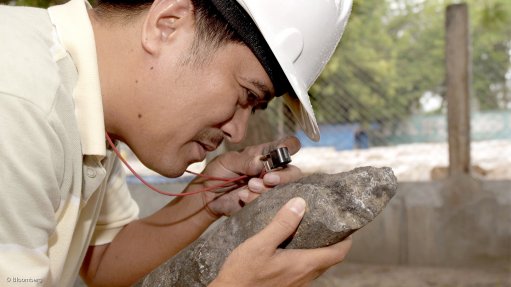
Photo by: Bloomberg
TORONTO (miningweekly.com) – Recent drilling results at TSX-listed Treasury Metals’ Goliath project, in western Ontario, have confirmed that gold mineralisation at a new zone continues at depth, highlighting the significant exploration upside at a project the company bills as probably being Ontario’s next gold producer.
Speaking to Mining Weekly Online in an interview on Monday, Treasury president and CEO Martin Walter noted that the company was well on its way to progressing the project up the value curve, being fully funded by South Africa-based Rand Merchant Bank (RMB) through to the “shovel-ready” stage.
“We have found a number of encouraging intercepts in the high-grade area of the C Zone, which is shaping our plans positively for the eventual underground mine. We will be testing more of these high-grade targets later in the year and we honestly believe that we will be able to breach the two-million-ounce resource level with our next resource update due out in the third quarter,” he said in Toronto.
Treasury last week reported that the company’s current drilling programme at Goliath, which was aimed at expanding the gold resource within the developing C Zone horizon as well as to tighten grades and extend known mineralisation at the Main Zone through infill drilling, was confirming significant upside to increase the resource beyond its current limits.
The C Zone lies about 30 m behind the Main Zone.
Among the exploration highlights was re-entry hole TL161-14RE, which returned 4 m at 5.5 g/t gold in the C Zone, which remained open at depth and to the west.
Also, in the same shoot, hole TL14-356, drilling down dip, intersected 13.5 m at 2.3 g/t gold outside the proposed C Zone western pit shell.
The gold explorer had reported a number of encouraging intercepts from the developing high-grade area of the C Zone over the past two drilling programmes, including the discovery hole, which returned 5.2 m of 18.6 g/t gold.
Other significant results included an intercept of 2 m at 11.27 g/t gold on the eastern edge of the C Zone shoot. Treasury had found that the C Zone was wider than the Main Zone. The C Zone also came to surface and had little drilling done on it in the past by previous project owners Teck Resources, Corona Gold and Laramide Resources.
Walter noted that drilling was ongoing at the Goliath gold project and that further results would be provided as soon as they became available, with a resource update scheduled for the third quarter.
Treasury continues to drill its C Zone in addition to conducting infill drilling on its Main Zone to convert more of its inferred resource into the indicated category.
MOVING UP THE VALUE CURVE
Treasury is also still on track to submit the Goliath project's environmental-impact statement to the federal Canadian Environmental Assessment Agency in the third quarter. Walter said Ontario was currently one of the best jurisdictions in the world in which to take a promising project through the permitting stages, owing to “the goal posts not being moved every so often”.
Treasury in February struck a financing accord with RMB for $6-million feasibility funding. Combined with a private equity placement of $3.35-million at the end of 2013, the company was confident that it had the cash needed to move the project through to the construction-financing phase.
“Having RMB on board is a huge tick in the right box for Goliath and we are confident that RMB would want to go with us all the way to production,” Walter said.
The company’s current gold resource, based on a November 2011 resource estimate, stands at 1.7-million ounces, and includes 760 000 oz in the indicated category and 940 000 oz in the inferred category, at an average gold grade of 2.87 g/t.
Walter stressed that owing to the project’s favourable location, its expected capital expenditure had been modelled at around $100-million based on gold output of between 70 000 oz/y and 90 000 oz/y over a ten-year or more mine life.
The property has road access, existing power lines and the nearby city of Dryden has access to a railway terminal.
Treasury completed a preliminary economic assessment in August 2012, which estimated a $144-million after-tax net present value at a 5% discount rate and an internal rate of return of 32.4%. The project’s payback period was calculated at 2.8 years, based on a $1 375/oz gold price.
Treasury’s TSX-listed stock on Monday closed at C$0.28 apiece, having fallen 15% in the last six months, as investors shunned the riskier junior investment market.